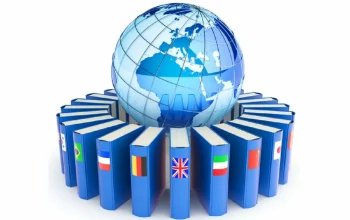Tagalog is an Austronesian language that originated in the Philippines and is spoken by about a quarter of the population there. Here are some fascinating facts about this language. To get more closely acquainted with this amazing language you can use special applications to translate English to Tagalog.
Origins and History
Tagalog derived from an earlier language called Old Tagalog, which was spoken in the central and southern parts of Luzon, the largest island in the Philippines. Over time, Old Tagalog incorporated aspects of other Philippine languages as well as some Spanish, Malay, Sanskrit, and Arabic words. The first book published in Tagalog was the Doctrina Christiana, a book of Catholic prayers, in 1593. Tagalog became the basis for the national language of the Philippines in 1937 under the name Pilipino. The current official name Filipino is based on the Tagalog language.
Native Speakers
There are about 45 million native Tagalog speakers worldwide, mostly in the Philippines. It is the first language of about a quarter of the population of the Philippines as well as the lingua franca. Many Filipinos speak Tagalog as well as the regional language of their area. Outside of the Philippines, a few hundred thousand speak Tagalog in the U.S., Canada, Saudi Arabia and other countries. If you want to communicate with the locals as if you know this beautiful language yourself, we advise you to use the Linguanex translator application for your cell phone. Just speak into it and it will speak Tagalog for you.
Characteristics
Tagalog features many Spanish and English influences due to the history of colonialism in the Philippines. It includes honorifics like po to show respect. Verbs are marked for aspect instead of tense. For example, rather than saying “I will eat later”, one would say “I eat later”. Tagalog also uses reduplication, repeating a word’s first syllable to indicate plurality or emphasis. For instance, “children” is bata-bata.
In Literature and Media
Much classic Philippine literature and poetry was written in Tagalog. These include the works of famous Filipino author and hero José Rizal in the late 1800s. Many TV shows, movies, newspapers and websites use Tagalog to reach broader audiences across the Philippines’ regions and languages. Tagalog is also used by tens of millions on social media within and outside of the Philippines.
Everyday Phrases
Tagalog speakers use many everyday greetings and expressions. These include Kumusta for “How are you”, Salamat meaning “Thank you”, and Oo or Hindi for “yes” or “no”. Mahal Kita means “I love you”. Some common exclamations are Ay nako! to express dismay and Susmaryosep! to show surprise, derived from the Catholic names Mary, Joseph and Jesus.
Conclusion
From its roots to modern media, Tagalog has evolved tremendously over history while retaining its role as a vital part of Filipino identity and communication. Through Tagalog literature and film, native speakers across generations keep this language thriving. Tagalog continues to absorb aspects of a multifaceted culture while connecting millions across the globe.




